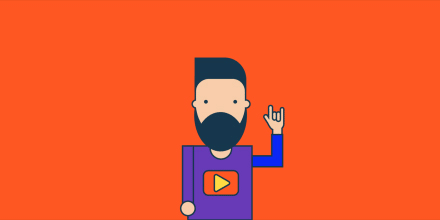Video engages the most.
According to Simply Measured, Instagram videos create two times more engagement than Instagram photos. On Facebook, posts containing videos lead to 25% higher engagement rates than ever before. On Twitter, the addition of videos causes a 28% increase in retweets. The point is clear: video is winning.
Video content takes over.
A Cisco study from 2015 forecasted that 80% to 90% of the Internet traffic in 2019 will be generated by video content (up from 64% in 2014). Steadily increasing mobile Internet penetration and faster connection technologies have led to a general change in viewing habits and loads of attractive and appealing new content formats.
Production costs are getting cheaper and cheaper.
Up until recently, the idea of a high-quality video production was associated exclusively with big budgets, a coveted marketing tool reserved for a privileged few. However, nowadays, aided by the drop in production costs due to cheaper, quality equipment and software, there are plenty of talented freelancers with the skillset and the tools to run a one-man-show production – from filming to post-production. Naturally, a budget spent in the right hands can be a decisive factor when it comes to quality, as with all things.
Social media channels are giving priority to native video content.
That is, Facebook gives priority to videos posted on Facebook, not Youtube. Take this with a grain of salt. What works well on YouTube doesn’t necessarily work well on Facebook. Watchtime on YouTube is about 8 times longer than on Facebook, where users are after shorter, more snackable content. Each platform has a unique purpose and their video is tailored to . Also consider that the metrics to measure success vary. Facebook views aren’t “real” views since Facebook has an autoplay function. When the video plays longer than 3 seconds Facebook counts it as a view. Also interaction on Facebook can’t be compared to the engagement on YouTube. Due to the nature of Facebook being a social network and YouTube a video platform, you won’t drive as many comments on the latter as the former.
Online video gets your message directly to an interested audience.
Video killed the Radio content – because traditional radio and TV content is distant and targets the masses, whereas web-video content is personal and targets individuals. People are unique and so are their interests and preferences – this is your opportunity to send your message directly to an interested audience. The classical sender-receiver model is outdated. People want to interact with and be close to the brand. You’re sending out a message and if it’s provocative enough, people will respond. So always pay attention to any interaction. Use it to strengthen the bonds and show appreciation for any feedback, and your audience will acknowledge that.
